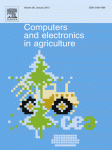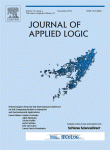Sensor networks and precision agriculture
Mostly, this section contains papers on sensor networks for precision viticulture in the Douro region. The papers report results of a long-term effort to implement a large-scale distributed cooperative sensor network in the Douro Demarcated Region in Northeast Portugal, the oldest demarcated region in the world, which has an extremely variable topography and mesoclimates. This is a collaboration with Raul Morais, Manuel Cabral and others at UTAD.
 Precision viticulture and precision agriculture require
the acquisition and processing of data from large scale and
heterogeneous sensor networks. Sensor integration is complex
due to the number of incompatible network specifications and
platforms. The adoption of a common, standard communication
interface would allow the engineer to abstract the relation
between the sensor and the network. This would contribute to
the adoption of plug-and-play technology in precision
viticulture/agriculture sensor networks. This paper explores
this need and introduces a framework for smart data acquisition
that relies on the IEEE 1451 family of standards, which
addresses transducer-to-network interoperability issues. The
framework includes a ZigBee end device (sMPWiNodeZ), as an IEEE
1451 WTIM (Wireless Transducer Interface Module), and an IEEE
1451 NCAP (Network Capable Application Processor) that acts as
gateway to an information service provider and coordinator of
the wireless sensor network. The paper discusses the proposed
IEEE 1451 system architecture and its advantages and closes
with results/lessons learned from in-field trials towards
smarter wireless sensor networks.
Precision viticulture and precision agriculture require
the acquisition and processing of data from large scale and
heterogeneous sensor networks. Sensor integration is complex
due to the number of incompatible network specifications and
platforms. The adoption of a common, standard communication
interface would allow the engineer to abstract the relation
between the sensor and the network. This would contribute to
the adoption of plug-and-play technology in precision
viticulture/agriculture sensor networks. This paper explores
this need and introduces a framework for smart data acquisition
that relies on the IEEE 1451 family of standards, which
addresses transducer-to-network interoperability issues. The
framework includes a ZigBee end device (sMPWiNodeZ), as an IEEE
1451 WTIM (Wireless Transducer Interface Module), and an IEEE
1451 NCAP (Network Capable Application Processor) that acts as
gateway to an information service provider and coordinator of
the wireless sensor network. The paper discusses the proposed
IEEE 1451 system architecture and its advantages and closes
with results/lessons learned from in-field trials towards
smarter wireless sensor networks.
 Despite the benefits of precision agriculture and
precision viticulture production systems, its rate of adoption
in the Portuguese Douro Demarcated Region remains low. We
believe that one way to raise it is to address challenging
real-world problems whose solution offers a clear benefit to
the viticulturist. For example, one of the most demanding tasks
in wine making is harvesting. Even for humans, the environment
makes grape detection difficult, especially when the grapes and
leaves have a similar color, which is generally the case for
white grapes. In this paper, we propose a system for the
detection and location, in the natural environment, of bunches
of grapes in color images. This system is able to distinguish
between white and red grapes, and at the same time, it
calculates the location of the bunch stem. The system achieved
97 and 91 percent correct classifications for red and white
grapes, respectively.
Despite the benefits of precision agriculture and
precision viticulture production systems, its rate of adoption
in the Portuguese Douro Demarcated Region remains low. We
believe that one way to raise it is to address challenging
real-world problems whose solution offers a clear benefit to
the viticulturist. For example, one of the most demanding tasks
in wine making is harvesting. Even for humans, the environment
makes grape detection difficult, especially when the grapes and
leaves have a similar color, which is generally the case for
white grapes. In this paper, we propose a system for the
detection and location, in the natural environment, of bunches
of grapes in color images. This system is able to distinguish
between white and red grapes, and at the same time, it
calculates the location of the bunch stem. The system achieved
97 and 91 percent correct classifications for red and white
grapes, respectively.
 This paper describes the hardware, communication
capabilities and software architecture of an intelligent
autonomous gateway, designed to provide the necessary
middleware between locally deployed sensor networks and a
remote location within the whole-farm concept. This
solar-powered infrastructure, denoted by iPAGAT (Intelligent
Precision Agriculture Gateway), runs an aggregation engine that
fills a local database with environmental data gathered by a
locally deployed ZigBee wireless sensor network. Aggregated
data are then retrieved by external queries over the built-in
data integration system. In addition, embedded communication
capabilities, including Bluetooth, IEEE 802.11 and GPRS, allow
local and remote users to access both gateway and remote data,
as well as the Internet, and run site-specific management tools
using authenticated smartphones. Field experiments provide
convincing evidence that iPAGAT represents an important step
forward in the development of distributed service-oriented
information systems for precision viticulture applications.
This paper describes the hardware, communication
capabilities and software architecture of an intelligent
autonomous gateway, designed to provide the necessary
middleware between locally deployed sensor networks and a
remote location within the whole-farm concept. This
solar-powered infrastructure, denoted by iPAGAT (Intelligent
Precision Agriculture Gateway), runs an aggregation engine that
fills a local database with environmental data gathered by a
locally deployed ZigBee wireless sensor network. Aggregated
data are then retrieved by external queries over the built-in
data integration system. In addition, embedded communication
capabilities, including Bluetooth, IEEE 802.11 and GPRS, allow
local and remote users to access both gateway and remote data,
as well as the Internet, and run site-specific management tools
using authenticated smartphones. Field experiments provide
convincing evidence that iPAGAT represents an important step
forward in the development of distributed service-oriented
information systems for precision viticulture applications.
 The system described in this paper is based on tags that
are placed in the field and which can be decoded by mobile
devices such as mobile phones or PDAs. The tags are used to
automatically associate a field location to the relevant
database tables or records and also to access contextual
information or services. By pointing a mobile device to a tag,
the viticulturalist is able to download data such as climatic
data or upload information such as disease and pest incidence,
without having to provide coordinates or any other references,
and without having to return to a central office. The
possibility of exchanging contextualized information and
accessing contextualized services in the field, using
well-known devices such as cell phones, may contribute to
increase the rate of adoption of information technology in
viticulture, and contribute to more efficient and
closer-to-the-crops practices.
The system described in this paper is based on tags that
are placed in the field and which can be decoded by mobile
devices such as mobile phones or PDAs. The tags are used to
automatically associate a field location to the relevant
database tables or records and also to access contextual
information or services. By pointing a mobile device to a tag,
the viticulturalist is able to download data such as climatic
data or upload information such as disease and pest incidence,
without having to provide coordinates or any other references,
and without having to return to a central office. The
possibility of exchanging contextualized information and
accessing contextualized services in the field, using
well-known devices such as cell phones, may contribute to
increase the rate of adoption of information technology in
viticulture, and contribute to more efficient and
closer-to-the-crops practices.
 This paper analyses solar radiation, wind and water flow
as energy sources that can be explored to meet the energy needs
of a wireless sensor network router within the context of
precision agriculture. It also describes a multi-powered
platform solution for wireless devices. The prototype can
manage simultaneously the three energy sources and is capable
of permanent operation. The energy scavenging techniques double
up as sensors, yielding data on the amount of solar radiation,
water flow and wind speed, avoiding the need for specific
sensors.
This paper analyses solar radiation, wind and water flow
as energy sources that can be explored to meet the energy needs
of a wireless sensor network router within the context of
precision agriculture. It also describes a multi-powered
platform solution for wireless devices. The prototype can
manage simultaneously the three energy sources and is capable
of permanent operation. The energy scavenging techniques double
up as sensors, yielding data on the amount of solar radiation,
water flow and wind speed, avoiding the need for specific
sensors.
 This paper is part of a long-term effort to introduce
precision viticulture in the Douro region. It presents the
architecture, hardware and software of a platform designed for
that purpose. Its power-management subsystem is able to
recharge batteries with energy harvested from the surrounding
environment from up to three sources. It allows the system to
sustain operation as a general-purpose wireless acquisition
device for remote sensing in large coverage areas, where the
power to run the devices is always a concern. The system node,
as a ZigBeeTM network element, provides a mesh-type array of
acquisition devices ready for deployment in vineyards. In
addition to describing the overall architecture, hardware and
software of the monitoring system, the paper also reports on
the performance of the module in the field, emphasising the
energy issues, crucial to obtain self-sustained operation, as
well as testing. The platform is currently being used as a
simple and compact yet powerful building block for generic
remote sensing applications and is well suited to precision
viticulture in the Douro region. It is planned to be used as a
network of wireless sensors on the canopy of vines, to assist
in the development of grapevine powdery mildew prediction
models.
This paper is part of a long-term effort to introduce
precision viticulture in the Douro region. It presents the
architecture, hardware and software of a platform designed for
that purpose. Its power-management subsystem is able to
recharge batteries with energy harvested from the surrounding
environment from up to three sources. It allows the system to
sustain operation as a general-purpose wireless acquisition
device for remote sensing in large coverage areas, where the
power to run the devices is always a concern. The system node,
as a ZigBeeTM network element, provides a mesh-type array of
acquisition devices ready for deployment in vineyards. In
addition to describing the overall architecture, hardware and
software of the monitoring system, the paper also reports on
the performance of the module in the field, emphasising the
energy issues, crucial to obtain self-sustained operation, as
well as testing. The platform is currently being used as a
simple and compact yet powerful building block for generic
remote sensing applications and is well suited to precision
viticulture in the Douro region. It is planned to be used as a
network of wireless sensors on the canopy of vines, to assist
in the development of grapevine powdery mildew prediction
models.